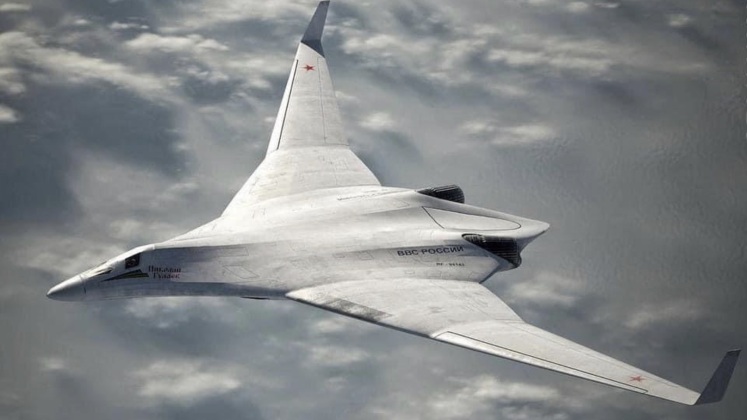News
Russia Boosting Production of Tu-160M Strategic Bombers: 70 Strong Fleet Expected
Russia is set to significantly increase production of the Tu-160M strategic bomber, according to a statement by Sergey Chemezov the head of one of Russia’s leading state tech firms Rostec. “The Tu-160 is a major part of Russia’s nuclear triad and, therefore, the upgrade of the operational aircraft and the resumption of the production of these strategic bombers are our priority task. The upgraded missile-carrying bombers outshine their predecessors in terms of their characteristics and have received new onboard radio-electronic equipment, NK-32-02 engines and other systems. The production of these aircraft will be ramped up in the coming years,” he stated regarding the program’s future. The press office of the United Aircraft Corporation, a subsidiary of Rostec which absorbed the Tu-160’s developer Tupolev in 2006, further elaborated that two more production bombers had entered flight testing. “The next two Tu-160M strategic missile-carrying bombers engineered by the Tupolev Aircraft Company (part of the UAC within the state tech corporation Rostec) have been delivered for flight tests. These are the first serial-produced planes under the Tu-160M resumed production program and the operational aircraft that has undergone heavy modernisation,” the office announced. The first Tu-160M made its first flight in January 2022.

The Tu-160 is widely considered the world’s most capable strategic bomber, and entered service in the Soviet Air Force in 1986 with a production run planned at 100 aircraft. The state’s disintegration in 1991 and almost immediate cutting of production resulted in Russia today fielding under 20 of the aircraft, however, leading to a decision by the Defence Ministry in 2015 to resume production as the enhanced Tu-160M variant. The most notable improvements included integration of entirely new avionics, NK-32-02 engines, and a range of new armaments most notably the Kh-101/102 radar evading cruise missiles. A number of hypersonic weapons are currently under development for the aircraft. The Tu-160 has an intercontinental range and is capable of operating at speeds exceeding Mach 2, although it lacks stealth capabilities on par with the American B-21 and Chinese H-20 which are both expected to enter service around 2030. While Russia has an advanced stealth bomber under development under the PAK DA program, slow progress in development was a key factor motivating the Defence Ministry to resume Tu-160 production while the ability of Russia’s defence sector to bring its successor into service before the late 2030s, if at all, remains in question due to its prior struggles with clean sheet post Soviet aircraft designs.

It has been speculated that the PAK DA could come to rely heavily on support, technology transfers and components from China leveraging its experience and investments in the H-20 program. With both bombers designed with conflict with the United States primarily in mind, Beijing could be amenable to supporting Russian developments. China reportedly previously showed an interest in acquiring Tu-160 bombers from Ukraine in the 1990s, which had inherited the bulk of the Soviet fleet, before Western intervention scuppered a possible multi billion dollar deal and led Ukraine to scrap many of the bombers it had. The result has been continued primacy for the Russian strategic bomber fleet over those of its two rivals, although this is not expected to last beyond 2030 despite the Tu-160M’s important advances over the baseline Soviet era Tu-160. 50 Tu-160M bombers are expected to be acquired by the Russian Air Force bringing the total fleet up to close to 70 aircraft, although the intended scale of production and timeline for completing deliveries remain uncertain. The possibility of Tu-160 exports, and development of a civil airliner based on the Tu-160 airframe, have also been raised.












